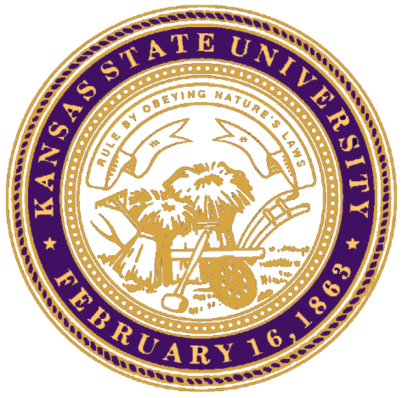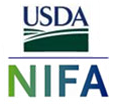Projects and Grants
Projects and Grants
In progress
|
|
Stochastic Forecasting of Harmful Algae Blooms in Cheney Reservoir.
Role: Lead PI Harmful Algae Blooms (HABs) occur worldwide and in many Kansas lakes and reservoirs. Climate change may increase the frequency, duration, and extent of these bloom events. Prediction of HABs and information about potential for exposure is essential for developing environmental management decisions during periods of limited resources and funding. The overall goal of this project is to develop probabilistic forecasting of HABs in Cheney Reservoir, a water supply reservoir in South-central Kansas with a history of HAB occurrences, based on collected datasets, watershed studies, and stochastic modeling of algae growth. |

|
Collaborative Research: Hydrologic and Permafrost Changes Due to Tree Expansion into Tundra
Role: CO-PI The Arctic has been warming at an accelerating rate over the last several decades and the changing climate has caused the invasion of trees and shrubs into tundra across the polar regions of Alaska, Canada, and Russia. These vegetation changes may have the potential to impact regional hydrology and climate. This project aims to develop mechanistic and quantitative understanding of implications of these forest-tundra interface dynamics. Specifically, this research will address impacts of tree expansion (also known as “encroachment”) on evapotranspiration for the understudied region of the Arctic, related to the species (larch and spruce) that contribute significantly to the world’s largest contiguous forest-tundra boundary in Siberia. The study will also have a specific focus on the effect of encroaching trees on the permafrost condition – an important, yet understudied linkage. As a result, this research will contribute to the knowledge base in several disciplines studying the coupled water, energy, and carbon cycles. The generated data products will be highly valuable for analyses, modeling, and remote sensing methods. Project activities will engage a group of researchers across U.S. institutions and strengthen international collaborations. Students will gain first-hand experience in research through fieldwork, model simulations, and data analysis. Societal questions about the role of the Arctic in the global environmental change will be addressed through communication of research outcomes to the Arctic communities and the general public of the U.S.A. including museum exhibits at the Museum of Natural History (MI), Orton Geological Museum (OH), Museum of Prairiefire (KS), public research seminars, and documentaries showcasing this research in social and news media. |

|
A stakeholder-driven approach to improving water quality through technology enabled urban-rural partnerships. Role: Co-PI |

|
Autonomous Sampling Vehicle for Early Detection of Harmful Algae Blooms Role: PI |
|
|
Quantifying Ephemeral Gully Erosion and Evaluating Mitigation Strategies with Field Monitoring and Computer Modeling. Role: Lead PI The overall aim of the project is to gain a better understanding of the sources of sediment, quantify the sediment amounts, and evaluate the mitigation strategies to soil erosion contribution from ephemeral gullies on agricultural fields. The specific objectives are to assess ephemeral gully (EG) driven soil erosion by monitoring soil loss from EGs on several no-till fields in Kansas, to evaluate factors that majorly contribute to soil loss along concentrated flow paths with a physically-based predictive model built for each monitored field, and to analyze a set of agricultural BMPs and recommend those that effectively mitigate EG erosion. |

|
CNH: Coupled Climate, Cultivation and Culture in the Great Plains: Understanding Water Supply and Water Quality in a Fragile Landscape. Role CO-PI The research approach interactively couples mechanistic models of the three systems controlling water supply and water quality in the Central Great Plains (CGP) – the hydrosystem, the human system, and the aquatic ecosystem – and then further integrates these system models through an agent-based decision model used to evaluate wholesystem response to climate variation scenarios derived from historical data and downscaled climate projections. Finally, policy optimization modeling will identify the most effective policy strategies to achieve sustainability under each considered climate scenario in the face of human cynicism about climate change. The specific objectives of are: (1) to develop an integrative coupled human-landscape model that incorporates the linkages and feedbacks among atmospheric, terrestrial, aquatic, and social processes that can be used to predict the potential impact of climate variability and change, land use and human activity on water resources on decadal to centennial scales, and (2) to provide a robust policy optimization model for adaptive sustainable management of water resources. |
Completed

|
Assessing Soil Erodibility with the Jet Erosion Test under Contrasting Tillage Practices. Role: Lead PI Sedimentation is a significant threat to flood-control and water supply reservoirs, with 33% of assessed lake acres in Kansas found sediment impaired. Soil erosion is identified as one of the priority areas in the Governor’s 50-year Vision for the Water in Kansas Plan. A major contributor to sedimentation problems of reservoirs is soil erosion from upstream cultivated croplands. Conservation tillage practices on cultivated fields, like no-till, can improve soil health and reduce soil erosion rates, but the benefits of no-till are still being reviewed. In this project, we propose to utilize the Jet Erosion Test (JET) to measure soil erodibility parameters in fifteen fields in three eco-regions of Kansas with vastly different tillage and management systems. We will assess soil erosion rates of agricultural fields and validate them with the measured data. The benefits of no-till versus conventional tillage fields will be evaluated, and the results from individual fields will be expanded to larger studied areas. We will create a set of maps that will show areas most sensitive to soil erosion based on the JET test results. The maps will be available online and distributed to state agencies and local stakeholder groups. |

|
Measuring Success of Targeted Sediment and Nutrient BMP Implementation: Upland, Stream, and Economic Responses. |
| |
Ephemeral Gully Assessment and Adoption of Preventive Measures to Reduce Erosion in Cultivated Croplands. Role: Lead PI This project demonstrates new strategies to reduce sediment transport from cultivated croplands by controlling ephemeral gully (EG) erosion using new scientific and implementation methods to (1) target specific fields vulnerable for sediment loss through concentrated flows and (2) adopt EG-targeted best management practices (BMP). The specific objectives relate to assessing all cultivated crop fields within the Turkey Creek and Running Turkey Creek subwatersheds for potential soil erosion using watershed models (sheet and rill erosion) and geomorphological models (EG erosion), ranking fields from highest to lowest in soil losses, identifying two EG-dominated fields under different tillage practices (conventional tillage and no-till), conducting geomorphological surveying, EG water quality and quantity monitoring, and assessing impacts of EG on soil health. We will also design a set of BMPs to reduce sediment transport through EGs and implement the selected BMPs in the field by farmers; and disseminate knowledge of EG-caused erosion and sediment transport, BMP impacts, and the results of this project through established extension networks, publications, and demonstration field days. |
| |
Assessment of deteriorating water quality in the Ogallala Aquifer and its effect on crops in Western Kansas. Role: CO-PI The overall goal of this project is to establish baseline information on the status of water quality of the Ogallala Aquifer as it relates to the major agricultural crops in the region. The specific objectives are to quantify the spatial extent of water quality deterioration in areas underlain by the Ogallala Aquifer, and to evaluate the effect of varying concentrations of specific chemical constituents primarily chloride and sulfate on crop growth. |